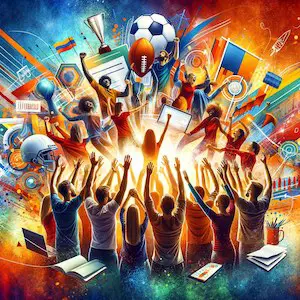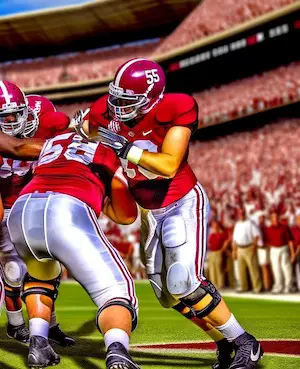Samoan chants, also known as sivas, are a form of traditional Samoan music and storytelling. The chants are performed by a group of singers and are accompanied by percussive instruments such as log drums and pate drums.

There are several different types of Samoan chants, including fa’ataupati (slap dance), au faitaulalo (storytelling), and siva Samoa (dance). These chants can be used for a variety of purposes, such as for welcoming guests, honoring ancestors, and celebrating special occasions.
Samoan chants are an important part of Samoan cultural heritage and are passed down from generation to generation. They are often performed at cultural events and gatherings, and serve as a way for the Samoan people to connect with their history and traditions.
In recent years, Samoan chanting has become more widely known and appreciated outside of Samoa, and many Samoan artists have begun to incorporate elements of traditional chanting into their modern music.
Table of Contents
Fa’ataupati (slap dance)
Fa’ataupati, also known as the Samoan slap dance, is a traditional dance originating from Samoa. The dance involves a group of male dancers slapping different parts of their bodies, including their thighs, chests, and arms, to create percussive sounds that accompany the singing of the sivas. The dancers are typically dressed in traditional Samoan attire, such as lava-lava skirts, and they may also wear ceremonial headdresses.
The fa’ataupati is performed in a standing position, with the dancers slapping their bodies in unison to create a rhythm. The dance is usually accompanied by a chant or song, and the tempo of the dance can vary depending on the music. The dance is energetic and can be quite vigorous, and the slapping of the bodies creates a powerful and exciting sound.
Here’s an example of a traditional fa’ataupati chant:
“Tofa soifua, soifua ma lau fu’a Ia manuia le atunu’u, ia manuia ona tatou.”
Translation: “Blessings, blessings to my family May the country be prosperous, may we all be prosperous.”
In this example, the dancers are singing about their hopes for their families and their country, and the slapping of their bodies creates a rhythm that adds to the energy of the performance.
Fa’ataupati is an important part of Samoan cultural heritage, and it continues to be performed at cultural events and celebrations in Samoa and other Samoan communities around the world.
Faitaulalo (storytelling)
Faitaulalo is a type of Samoan chant that involves storytelling. The term “au faitaulalo” literally means “to speak stories.” It is a form of oral tradition that has been passed down through generations in Samoa, and it is used to tell stories about the history, culture, and customs of the Samoan people.
Au faitaulalo is typically performed by a single person, who may use gestures, props, and vocal techniques to bring the story to life. The stories can be serious or humorous, and they can range from traditional legends and myths to more personal stories about the experiences of the performer or their family.
The chanting style used in au faitaulalo is characterized by a steady rhythm, with the performer using their voice to create different musical elements such as melody, harmony, and rhythm. The stories are often accompanied by percussive instruments, such as drums or gourds, to create a musical background for the performance.
Here’s an example of a traditional au faitaulalo chant:
| Samoan | English |
|---|---|
| “O le tama ua tasi | “This boy is one |
| O le aiga ua tasi | The family is one |
| O le fale ua tasi | The house is one |
| E lelei ai lenei tamaiti” | This child is well” |
In this example, the performer is telling a story about a boy and his family, and they are using the chant to create a musical background for the story. The steady rhythm of the chant, combined with the use of gestures and props, helps to bring the story to life and engage the audience.
Au faitaulalo is an important part of Samoan cultural heritage, and it continues to be performed at cultural events and celebrations in Samoa and other Samoan communities around the world.
Siva Samoa (dance)
Siva Samoa, also known as the Samoan dance, is a traditional dance originating from Samoa. It is performed by a group of dancers, typically in a standing position, who move their bodies to the rhythm of the music and the singing of the sivas.
The siva Samoa is characterized by graceful, fluid movements of the arms, legs, and torso, as well as intricate footwork. The dancers may also use hand gestures, such as raising their arms above their heads, to add to the visual elements of the performance. The dance is usually performed to a fast-paced, upbeat rhythm, and it can be quite energetic.
Here’s an example of a traditional siva Samoa chant:
In this example, the dancers are singing about their superiority and their gratitude, and the rhythm of the dance adds to the energy of the performance.
Siva Samoa is an important part of Samoan cultural heritage, and it continues to be performed at cultural events and celebrations in Samoa and other Samoan communities around the world. It is also a popular form of dance for Samoan dancers to perform in competitions, where they can showcase their skills and represent their communities.
Samoan Chants in Modern Music
Samoan chanting, or fa’ataupati, has been incorporated into modern Samoan music in a variety of ways. Here are a few examples of how Samoan chants have been used in modern music:
- Reggae music – Many Samoan reggae artists, such as Innosence and J Boog, have incorporated elements of Samoan chanting into their music, often blending traditional Samoan rhythms and vocal styles with modern reggae beats.
- Hip-hop music – Some Samoan hip-hop artists, such as Powfu, have incorporated elements of Samoan chanting into their music, using traditional Samoan rhythms and vocal styles to create a unique sound.
- Pop music – Some modern Samoan pop artists have incorporated elements of Samoan chanting into their music, often using traditional Samoan rhythms and vocal styles to create a lively and energetic sound.
- Electronic music – Some modern Samoan electronic music artists have incorporated elements of Samoan chanting into their music, using traditional Samoan rhythms and vocal styles to create a unique and innovative sound.
In all of these examples, Samoan chanting has been used to bring a sense of cultural heritage and tradition to modern Samoan music, while also creating a unique and recognizable sound that appeals to a wider audience.Regenerate response
Samoan Chants Frequently Asked Questions
Samoan Chant Posts

Gregorian Christmas Chants

Love Spell Chants

Best Softball Chants for U12

AKA Sorority Chants

Argentina Football Chants

Short Chants and Cheers

Alabama Football Chants

Everything to Know About African Chants

